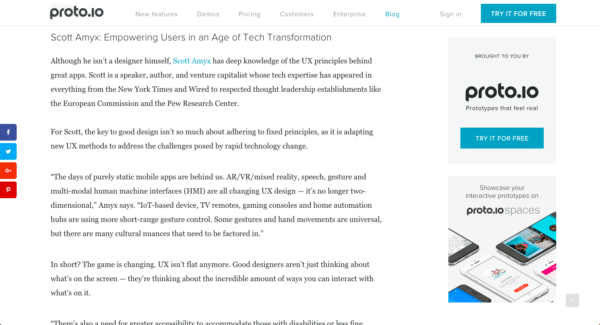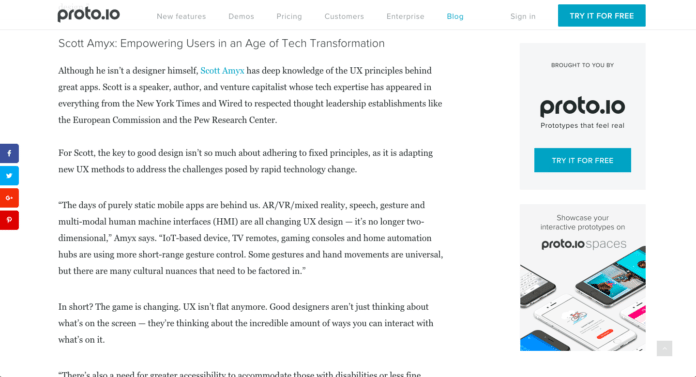We asked mobile app designers and other tech professionals what UX design principles they see as most important for making better apps. Here’s what we learned:


Scott Amyx: Empowering Users in an Age of Tech Transformation
Although he isn’t a designer himself, Scott Amyx has deep knowledge of the UX principles behind great apps. Scott is a speaker, author, and venture capitalist whose tech expertise has appeared in everything from the New York Times and Wired to respected thought leadership establishments like the European Commission and the Pew Research Center.
For Scott, the key to good design isn’t so much about adhering to fixed principles, as it is adapting new UX methods to address the challenges posed by rapid technology change.
“The days of purely static mobile apps are behind us. AR/VR/mixed reality, speech, gesture and multi-modal human machine interfaces (HMI) are all changing UX design — it’s no longer two-dimensional,” Amyx says. “IoT-based device, TV remotes, gaming consoles and home automation hubs are using more short-range gesture control. Some gestures and hand movements are universal, but there are many cultural nuances that need to be factored in.”
In short? The game is changing. UX isn’t flat anymore. Good designers aren’t just thinking about what’s on the screen — they’re thinking about the incredible amount of ways you can interact with what’s on it.
“There’s also a need for greater accessibility to accommodate those with disabilities or less fine motor control. On top of that, there’s the challenge of designing to mitigate repetitive movements that could lead to injury such as carpal tunnel, joint pains and tennis elbow,” says Amyx.
Amyx notes that all of these advances in technology require us to think about UX design in an entirely different way — at the same time, however, it’s important to not simply think that a great UX can be built by taking an old interface and slapping on VR support. Good next-gen UX will be built by people who are natively creating it — making it part of the product, instead of just something added randomly for bonus points.


















